Interview with Tony Gentilcore: Man among Men
I’m very fortunate to track down and make Tony freakin Gentilcore agree to do an interview with me for this blog.
For those who don’t know who Tony is, you should be ashamed of yourself. He’s the co-founder of Cressey Performance in Hudson, Massecheusettes, where they train a lot of elite, minor league and junior baseball players, as well as anyone in between who can tolerate their intensity and all-around bro-tasticness. He’s normally responsible for training hundreds of athletes and athletically minded clients each month, while also producing more info than a Kiebler Elf on crack can make cookies. He’s written for Men’s Health magazine, T-Nation.com, writes a very successful blog and a whole bunch of other stuff. He’s a guy who walks his talk as well, maintaining a training regimen that would make most trainers fall over at the mere thought of doing, and can pull a 570 pound deadlift while maintaining a body weight of around 200 pounds and a neck that’s 31 inches long and 8 inch calves (give or take). That’s right, he’s officially a beast, and he’s also smart as hell, and has an abnormal obsession with Harry Potter and Star Wars.
Let’s see what happens when two of the brightest minds in strength and conditioning shoot the shit about what it takes to be a great trainer, things that tick them off, Jillian Michaels overall sucktitude, and hilarity of all types.
DS: So Tony, who the hell are you, and why should people care?
TG: Well, for starters I’m uncannily witty, charming, and good looking. Okay, in seriousness I’m not one who necessarily likes talking about himself, but if you’re looking for the Cliff Notes version:
– I grew up in a small town in Central NY (about 30 miles south of Syracuse).
– Growing up my idol was Mark McGwire (and Optimus Prime).
– I got my first weight training set for Christmas when I was in 7th grade
– Like an asshat, I did curls till I puked in the face.
– I played baseball all through high-school as well as college, and while I had a few professional tryouts, it never panned out. Those curls didn’t help my fastball, unfortunately.
– I graduated with a degree in Health Education with a concentration in Health/Wellness Promotion from the State University of New York at Cortland
– Alicia Keys is so freakin hot. Just throwing it out there.
– Upon graduating, and if anyone is still actually reading this part, I worked in corporate fitness for three years where I’d tell people what to do and they’d never listen to me.
– It was during this time that I started realizing that I didn’t learn shit in school, and took it upon myself to try to make myself better and stop reading bodybuilding magazines. It was here when I started reading t-nation.com, as well as various other websites that really helped to broaden my horizons and open my eyes to just how stupid I really was.
– As luck would have it, it wasn’t long thereafter that Eric Cressey and I started conversing back and forth on various fitness forums – yes, Eric and I met on the interwebz – and I started to realize that I needed to leave NY if I really wanted to make a career for myself.
– Fast forward to today, I’m the co-owner of Cressey Performance, located just outside of Boston, MA. We’re kind of a big deal (only slightly exaggerating), in that we have athletes and clients from all over the world who travel to come train with us. While we’ve definitely built a great niche with baseball players, we actually have quite an eclectic client base ranging from high school and college athletes (from various sports) to weekend warriors and fat loss clients who tend to take more of a serious approach to their training.
Whether or not all of the above constitutes anyone caring who I am is obviously up for debate. But at the end of the day, I can say that I work in one of the best gyms in the country, with some of the coolest people, and I actually enjoy going to work. Not a lot of people can say that. Oh, and I have a six-pack – so that counts for something.
DS: So people didn’t listen to you? Sounds like me on a daily basis. Did you start doing something different to get people to listen to you more or was it the change of scenery that got people’s attention?
TG: Well to put a little more perspective on things, it’s not that people never followed my advice – they did – but there were definitely times where I felt I was leading the horse to water only to find out it wasn’t thirsty. People need to WANT to change; you can’t force it. Out of college, I was wet underneath the ears and wanted to help everyone, and to a greater degree – prove them wrong. BAD idea.
No one wants to be told that what they’ve been doing for the past 15 years has been wrong. What’s more, they don’t want to be told that by some hotshot personal trainer who barely knows them. I just went about it the wrong way I suppose.
Soon, however, I learned that you can’t just throw ten things at someone and expect them to make the necessary changes. You have to kind of guide them along, using baby steps if you will. For example, fat loss. We all know that at the end of the day if we can get people moving a little more and eating less crap, good things will inevitably happen. So, what do most trainers do? They overwhelm people:
Okay, so here’s what you gotta do. You need to like, go to the store and buy a shitload of stuff you’ve never bought, let alone have the faintest idea how to prepare and cook. Then, you need to set your alarm to get up really early to make breakfast and then go for a five-mile jog while trying not to vomit. Then you’re going to pack a bunch of protein and take it to work with you. Oh, and make sure you get up every hour to stretch, you know, cause your posture isn’t great. Blah blah blah blahbidy blah.
That’s what they hear. Seriously.
Rather than throw the entire kitchen sink at them, why not just try to focus on ONE thing per week? First, let’s make a concerted effort to get to the gym three times per week. Capiche?
Once they start making that a habit, then you can move on and start focusing on something else, like showing them what their best sources of lean proteins are.
So on and so forth.
Don’t overwhelm potential clients and try to impress them with big words, bells, and whistles. Moreover, don’t do what I did back in the day and try to prove people wrong all the time. It’s annoying.
Also, and this is completely on an aside: It wasn’t so much the change of scenery that got people’s attention so much as it was I just grew up, made an effort to make myself better (by reading and investing in myself) and growing up.
DS: So you and Eric were e-mail buddies before working together. Was it love at first type, or did you guys go at each other on different things and threaten to kick each others asses through your DSL connections?
TG: Hahahaha. Close. Eric and “knew” of each other through various forums on the internet. We exchanged emails here and there, but it wasn’t until he became assistant editor of another site (ruggedmag.com, which doesn’t exist anymore) that we started conversing a bit more. I had some interest in doing a little writing, and he was the one that encouraged me to do so. As luck would have it, ruggedmag.com published my very first article, and a few others after that. Eric played a huge role in that happening.
Not surprisingly, he and I became good friends, and the rest as they say, is history.
DS: What made you think “Hey, I have an opinion, I’ll bet people will want to hear about it, so I’m going to start a blog!!”?
TG: Well, as I noted above, my writing career started as just something to do for the hell of it. I mean, I don’t have any formal education as a writer: I’m just a guy who likes to lift heavy things, eat beef jerky, and can differentiate between your/you’re, to/too/, and there/their/they’re. I started writing articles long before I started a blog. It wasn’t until I moved to the Boston area that I even thought about writing one.
I started working at a rather swanky club in the heart of the city, and it just so happened that one of my clients worked for the Boston Herald and had mentioned to me in passing that they were looking for someone to provide some fitness/nutrition content on their website. She asked whether or not I’d be interested, and I of course said “hell yes!”
The blog has been great. It’s definitely allowed me to grow as a writer. I’m often asked by other fitness professionals how they can get into t-nation.com, or Men’s Health, and all I really say is 1) don’t suck, and 2) “WRITE!!” Honestly, if you’re in this industry and are trying to get your name out there, and you don’t have a blog, you’re missing the boat entirely.
I’m often amazed at just how many people read my blog on a daily basis, and not a day goes by where I’m not humbled and grateful that people go out of their way to say how much they enjoy my blog, as well as the other articles I write. As anyone who’s read my work knows, I don’t take myself too seriously, and it’s been great to see the blog grow in popularity despite my affinity for self-deprecating humor, rants on Tracy Anderson, and pictures of hot girls being hot.
DS: Glad to see that grade 10 english class is paying off for you. What do you feel are some of the biggest problems with trainers today (myself included)? What can they do to fix themselves up?
TG: Loaded question for sure, but something I think is fairly simple to answer. I like lists, so I’m going to break from the norm and just list some random thoughts here:
– I’ve touched on this in the past on my blog, but it’s something that needs to be reiterated here. Many of the new trainers and strength coaches coming into the industry today have an overwhelming sense of entitlement. They think that because they have a degree and read Supertraining, that they should be training professional athletes on day #1 and that training overweight housewives is beneath them.
– Get over yourself. I think I was training for people five years before I trained my first professional athlete. What’s more, I think there’s a lot to be said about “paying your dues” and working in a commercial gym setting for a year (or two). (Note from Dean – 6 years at World Health. Is that too long?) Granted you’re constantly fighting the urge to want to jump into a live volcano from all the stupid shit you see on a daily basis, but the opportunity to train a wide variety of clientele with different needs and different goals is priceless. You’ll learn a lot about yourself, and soon understand that, people, a great trainer is just as much about the book smarts as it is being a people person.
– Not making an effort to get better. I remember listening to a trainer talk at a gym I used to work at, and he said, I kid you not, “I’ve learned all I’ll ever need to know in this industry.” If there was ever a time I want to slap the face off of someone it was then. What a pompous, arrogant prick. You have guys out there like Mike Boyle – who have been doing this longer than most of us have been alive – still reading, attending seminars, and trying to get better. Why aren’t you?
– Not being able to distinguish between whether this is a hobby or a career. It’s readily apparent who’s who out there. People who view this more like a hobby are the ones that give the profession a bad name. These are the ones who are the professional rep counters, bragging about who they banged the night before while wearing UnderArmour. These are the ones who have their clients squat on a BOSU ball and think lactic acid is still why people get sore the next day. You think that’s air you’re breathing??
Conversely, those who want to make this their career are the ones who give a shit. They take pride in their appearance, actually coach their clients, track progress, are punctual, attend seminars, read books, and don’t use the leg press……..ever.
I could go on, but I feel like I’m just rambling now.
DS: The industry is evolving at such a rapid pace, and new research is always coming out refuting what were commonly held beliefs and concepts. Has there been any thought processes that you’ve had completely flip on their head and caught you off guard, making you re-think what you were doing? To give an example, until recently I thought the burn in my muscles was from lactic acid. This was proven incorrect.
TG: It’s crazy, right? All the more astounding, then, that there are a lot of coaches and trainers out there who don’t take it upon themselves to keep up with the times. For what it’s worth, when it comes to actually reading research papers, I’d rather drink explosive diarrhea. I hate it. Even still, I go out of my way to educate myself and find other ways to keep informed.
Keeping on task (sorry for the visual), as far as anything that’s caught me off-guard or has really had an impact on me as a strength coach, I’d say that Mike Boyle and Gray Cook’s joint-by-joint approach to training knocked me off my ass. Not so much from a “wow, I really got that wrong” perspective, but from a “wow, why didn’t I think of that?” perspective.
For those who have no idea what I’m talking about, basically it comes down to this: There are certain joints in the body that need to be trained with mobility in mind (ankles, hips, t-spine for example), and certain joints that need to be trained with stability in mind (knee, lumbar spine for example). If you start from the ground, up – you’ll find that there’s an alternating pattern of mobility/stability.
Ankle = mobility
Knees = stability
Hips = mobility
Lumbar Spine = stability
Thoracic Spine = mobllity
Scapulae = stability/mobility
Taking it a step further, whenever we come across an issue with a specific joint (whether it’s anterior knee pain, shoulder external/internal impingement syndrome, herniated L5, excessivekyphosis in the t-spine, etc), we can usually look at a dysfunction with either the joint below and/or above the injured joint.
(Note from Dean – Check out Muscle Imbalances Revealed for more ways to determine if a joint is moving well or not, as well as what the hell to do to fix it.)
For instance, when someone comes to me complaining of chronically sore knees, I rarely (if ever) look at the knees. Instead, I’ll look at the ankles and usually find there’s a dorsiflexion deficit (we need a certain amount of dorsiflexion in order to perform a proper lunge or squat, or sprint, or jump, or I think you get the idea). Or I’ll look at the hips and find that they’re either weak (glute medius, glute max are woefully inactive), stiff/short (hip flexors are “tighter” than a crowbar), or both. Either way, it’s not the knees that are causing the issue, it’s elsewhere, which is why the joint-by-joint approach has had such a huge impact. It got people to think outside the box and to look at the body as “system,” and not just as bits and pieces that operate on their own.
DS: I totally agree, we need to think of the body in a linked chain approach with sufficient energy devoted to the weak links in the chain, and the more importance we need to place on proper technique and making the body work, not just look hella good in a pair of swim trunks. We see a lot from the big names in the field (Boyle, Santana, Durkin, Cressey, Yourself!!), but who do you feel are the really bright trainers out there that deserve a whole lot more cred?
TG: Well thank you for the kind words, but I’ll be the first to admit that I’m no where near the same stratosphere as the aforementioned names above. Nonetheless, some of the people whom I have a lot of respect for other than the Cosgrove’s, Robertson’s, Cook’s and McGill’s of the world would be:
Bret Contreras – the guy is a machine. I’d argue that he’s done more in the past 18 months in terms of writing and putting out quality work than anyone I can think of.
Mark Young – brilliant guy who isn’t afraid to ruffle feathers and go against the grain! Pssst, if anyone from Men’s Health is reading this, give Mark a call for crying out loud (Note from Dean – No, don’t call Mark. You’re reading my blog, not his, so call me instead!! Nothing against Mark, he’s cool and all, but he lives in Hamilton. What’s up with that??).
Brian St. Pierre – Brian was actually one of out very first interns at Cressey Performance, and ended up being our first full-time employee. Unfortunately, Brian left CP a few months ago after getting hitched (asshole – just kidding, but not really) to go back to school up in Maine (he’s getting his Masters in Nutrition). I fully expect his name to blow up in the next few years – mark my words.
Nia Shanks – it’s a well known fact that both Nia and I have internet crushes on one another. And, more importantly, if or when she ever makes it up to Boston, we’re having a deadlift-off (based off relative weight, of course). I LOVE Nia because she isn’t afraid to tell women to lift heavy things.
Other names that pop out at me are Carson Boddicker, Patrick Ward, Matt McGorry, PJ Striet and not Jillian Michaels.
DS: You forgot one very important name: Dean mother effin Somerset!!! Let’s say you got into a huge bro-fight with Cressey and decided it was time to go on your own tomorrow (and pigmy elephants will fly out of my butt). Cash is low, so what three things would you absolutely want your facility to have to make it a dream facility for you?
TG: Anytime anyone thinks about opening up a facility, you have to think about logistics. To me, assuming space is limited, it doesn’t make much sense to spend money on things like a glute ham raise, when there is really only ONE function for it, and where only a limited number of clients will actually be able to use it from day one.
Using that train of thought, I’d say first and foremost I’d want a high-quality power rack. Any legit facility starts and ends with a power rack. Non-debatable.
Secondly, I’d probably have to go with Power Blocks. Dumbbells are expensive as ****. Furthermore – and this is where the whole “logistics” thing comes into play – with power blocks, not only do you save money, but a lot of space, too.
Thirdly, and this isn’t something you can put a price-tag on – attitude. I think a lot of what separates Cressey Performance from many facilities is the fact that when you walk through the doors, you KNOW you’re in a place where people fucking train their asses off. More to the point, you won’t find any foo-foo nonsense going on (ahem, BOSU balls), nor will you ever, never, ever, never (I’ll watch an entire episode of Glee while painting my toe nails if it ever happens) hear the likes of Taylor Swift, Coldplay, Justin Bieber, Celion Dion, or any other form of music that’s equally as likely to make my ears bleed being played on the stereo.
And, for what it’s worth, we actually encourage the use of chalk. We’re pretty badass.
People fail to comprehend the importance of training environment. I’d go so far as to say that more often than not, that’s the missing ingredient for most trainees. Get them in a place surrounded by like minded individuals, and around people who are stronger than themselves, and they’ll perform things they never thought they’d be able to do. The question is, however, do they have the balls (or for the females reading: dammit, I have no idea what the female equivalent is here. Girl down there part?) to actually do it?
DS: Who’s gonna win in an Indian leg wrestling match, you or me? Readers, please note that Tony’s pretty jacked and can pull a 500 pound deadlift. I cannot, but I’m quick like a cat, which is why they call me “Whiskers.”
TG: Uh, hello?!?!?! 570 lbs, thank you very much. And, I’m literally sitting in the corner of my living room in the fetal postion now. Thanks.
DS: I guess that means I win by default!! Were you surprised by the outcome of the World Series? I’ve worked with some NHLers in my time, and when the playoffs are on, if they aren’t playing , they could care less. Were the pros you guys train watching or were they trying to distance themselves?
TG: Major FAIL on my part, but I think I watched maybe four innings total of play-off baseball the past few weeks. You see, I made a conscious decision a few months ago to get rid of cable entirely. Admittedly, I did it mainly because I’m rarely home long enough to watch it (entrepreneurship has a tendency to do that), so spending upwards of $70-$80 per month seemed a bit pointless.
More specifically, though, I did it so I could be more productive. We all know how it is, one episode of Sex and the City reruns turns into four episodes, and before you know it, half your night has been wasted. Of course, this is just hearsay. I obviously wouldn’t be caught dead watching that show.
GODDAMIT CARRIE, DON’T YOU SEE HOW MUCH AIDAN LOVED YOU!!!!!!! BIG IS AN A-HOLE!!!
As it is, my day typically starts around 5-5:30 AM and I get up and check emails and do a little writing or write programs. I go to work, come home, and try to do a little reading. People don’t read enough. Turn the freakin television off for crying out loud. It’s rotting your brain!
Anyways, there are times where I literally feel I’m cut off to the world. I actually had no idea the Giants won the Series until I heard it on the radio on my way out to the facility today.
Truth be told, I feel I’m better off. I mean, television (particularly the news) is nothing but a downer anyways. It’s all murder, terrorists attacks, war, health care reform, we’re all going to die, and bedbugs anyways. Ignorance is bliss in my opinion. Sure, there are a handful of shows I watch: when it was on, I NEVER missed Lost, but I’ll watch The Daily Show on my computer every day. I’m more of a movie guy anyways.
But to answer your question, not many of the guys were talking about the play-offs all that much. As you noted, when the guys aren’t actually playing, they could care less. In all actuality, the talk about Jersey Shore more than anything else.
DS: Jersey Shore!?!? Seriously, you’re dead to me now. What’s the biggest success story you’ve had with a client?
TG: Well, when I was working with Jessica Alba for her last movie role………hahahaha. I wish.
You know, it’s really hard to answer this one because I’ve worked with so many awesome people. Who’s to say that helping someone who’s battled lower back pain for the better part of ten years walk around pain free is any more “successful” than helping a young girl train her ass off all off-season and then watch her win her first varsity softball game – as a FRESHMAN?
Likewise, I could also make a case for all the countless women I’ve taken from lying in the corner in the fetal position at the mere mention of “deadlifts,” to where they’re repping over 200 lbs without batting an eye – and they’ve never been leaner or felt sexier in their lives.
Or, how about the 80+ year old woman I trained a few years ago who never lifted a weight in her life, who ended up making exercise a 3-4 day per week commitment because it allowed her to manage her chronic arthritis? FYI: yes Helena, she squatted too (sorry, inside joke that only those who read my blog will understand).
The fact of the matter is, it’s virtually impossible for me to narrow it down to any one example. One of the coolest things about my job (other than the fact I get to wear sweatpants to work) is that I get to witness people do something they never thought possible every.single.day. I truly am lucky.
DS: In closing, are there any rants, topics or opinions you’d like to share, or messages you’d like to give to the people reading this post right now?
TG: Yes, one thing. Learn to get out of your comfort zone. It pains me whenever I happen to train in a commercial gym and I just watch people walk around like robots doing things that make me want to jump onto a live grenade.
Arm circles with pink dumbbells? Really?
Walking on the treadmill while watching The Real Housewives of Whereverthefuck? Awesome.
And don’t even get me started on all the guys I see performing their ¼ squats with way too much weight on their back, or the 37 sets of bench presses they perform every Monday, Wednesday, and Friday.
For most, they have NO idea what it’s like to actually train with any intensity what-so-ever, let alone with a goal in mind. Moreover, it amazes me how people continue to do that exact same things day after day, month after month, and even year after year, expecting a different result. It’s asinine. When in doubt, do the EXACT opposite of what everyone else is doing.
Ever notice how the power racks are always empty? Well, at least when Douchey McDouchypants isn’t curling in it anyways?
Or better yet, how often do you ever see someone doing some HARD metabolic training in a commercial gym? You know, where you look at someone and you think to yourself, “holy cow, that guy (or girl) is getting after it.” It’s pretty rare.
But you know what? Those are the people who need to emulate. Do what they’re doing Stop doing body part splits (shoulder days, back and bis day, chest and tris), stop using the machines, and for the love of god, get OFF the treadmill.
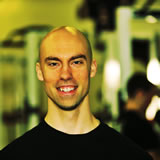
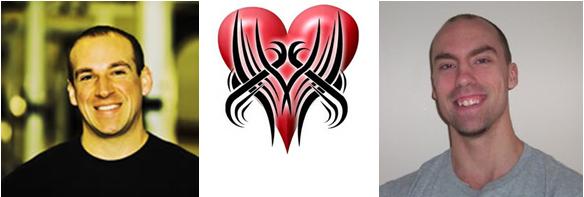



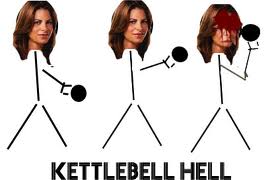
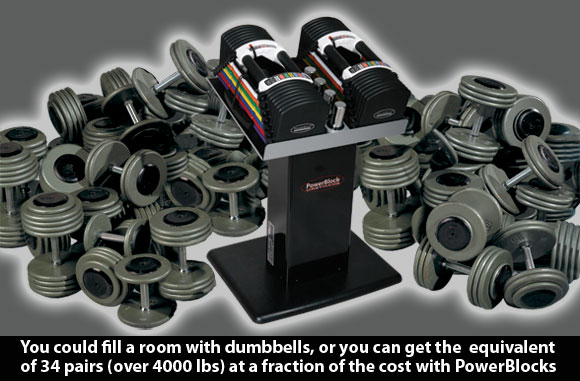


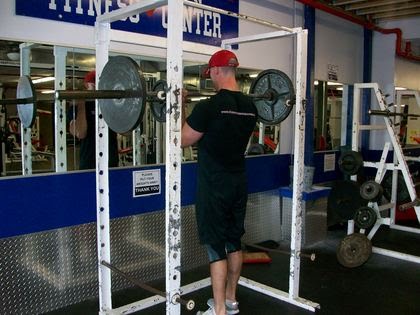
9 Responses to Interview with Tony Gentilcore: Man among Men